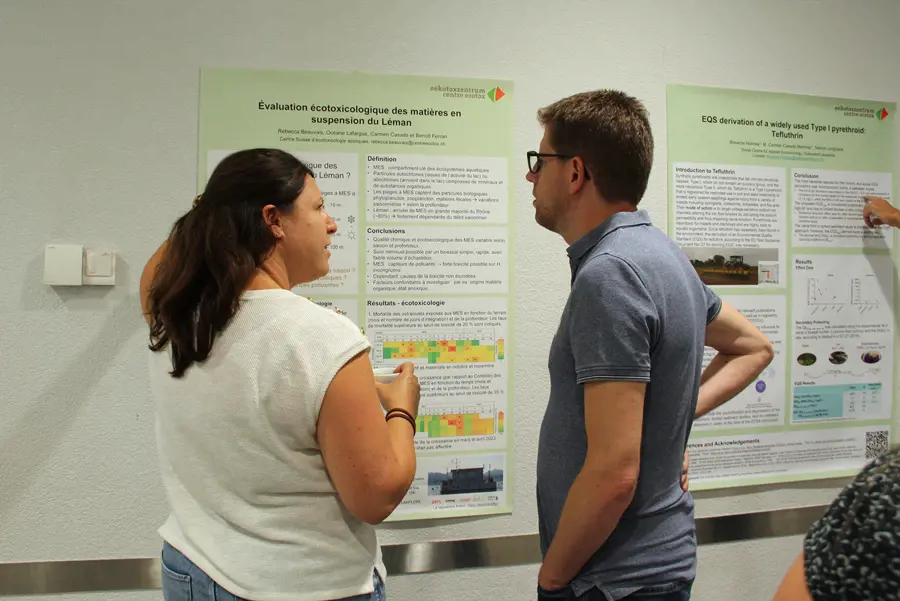
27. August 2025, Topic: Aquatic Ecotoxicology Soil Ecotoxicology Sediment Ecotoxicology Risk Assessment
Dialogue Day 2025 in Bern
During a dialogue day, the Ecotox Centre presented its current projects and exchanged ideas with stakeholders from various fields.
At yesterday's Dialogue Day in Bern, the Ecotox Centre presented its current projects to around 50 stakeholders from research, administration and industry – an event that was already well received two years ago. An important topic this time were the persistent chemicals PFAS (per- and polyfluoroalkyl substances), which were the subject of two presentations. A measurement campaign has shown that PFAS concentrations are particularly high in urban sediments, with sediments near fire brigade training grounds also being heavily contaminated. The Ecotox Centre assesses sediment contamination in various regions and derives ecotoxicological threshold values.
Lessons learned from the PFAS challenge
In addition to the ubiquitous distribution of PFAS through their global transport, point sources have led to PFAS hotspots. Despite significant data gaps on the toxicity of these substances to the environment and humans, PFAS contamination is a global problem – a result of historical authorisation procedures that took little account of persistence, substance mixtures and long-term effects. This experience provides important lessons for future risk assessment, such as the inclusion of the PMT criterion (persistent, mobile, toxic) and environmental cycles, as well as consideration of the One Health approach, as the environmental and health effects of PFAS are closely linked and should not be considered in isolation.
Bioassays provide important additional information
Other pollutants were also in the focus: a project on contaminated sites investigated which ecotoxicological methods are suitable for assessing the contamination of soils and sediments. Although such tests are not required by law, they are nevertheless frequently carried out: they provide important additional information on the bioavailability and effects of pollutants and could therefore be incorporated into future enforcement guidelines.
The Ecotox Centre also investigates the occurrence of rodenticides in wild animals in Switzerland and has shown in a situation analysis that birds of prey, hedgehogs, foxes, fish and even wild boars are contaminated with anticoagulants. Pathological studies indicate that these substances may be associated with non-specific health damage in these animals.
Roads and ammunition under the microscope
Roads are another source of pollutants from oil, petrol, the roads themselves or tire abrasion. Tire additives can also be problematic. On behalf of the tire industry, the Ecotox Centre is investigating the ecotoxicity of tire abrasion, as well as the toxicity of cleaning water and rainwater from roads. Soils contaminated with ammunition and explosives were also examined in more detail: the aim here is to chemically characterise the most important pollutants and determine their effect on soil organisms in order to derive risks for various uses as well as protection and remediation objectives.
In addition, a poster session accompanied by coffee and lively discussions provided an overview of other current projects, such as UV filters in Swiss lakes, biological online monitoring and a concept for monitoring pesticide residues in soil. The event demonstrated the diversity of the Ecotox Centre's work and the importance of exchange with stakeholders. The next Dialogue Day will take place in two years' time – once again as a full-day event with discussion groups on current challenges.








